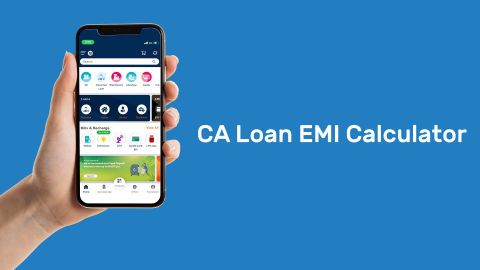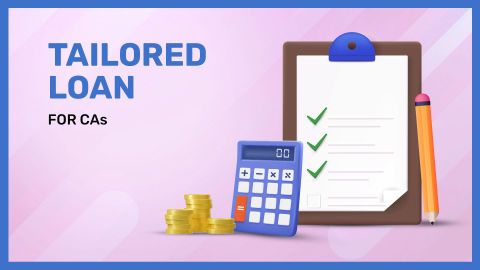Types of risks in Financial Risk Management
In financial risk management, various types of risks need to be addressed to ensure a stable financial environment. Understanding these risks is essential for FRMs.
- Market risk: The risk of losses due to market fluctuations.
- Credit risk: The possibility that a borrower might default on a loan.
- Operational risk: The risk arising from internal processes or systems failures.
- Liquidity risk: The risk that a company may not have sufficient funds to meet its obligations.
- Interest rate risk: The risk related to changes in interest rates affecting the value of investments.
As an FRM, understanding and mitigating these risks is key to managing an organisation’s financial health.
Requirements for FRM designation
To earn the FRM designation, you need to meet specific requirements set by GARP:
- Education: You must have a bachelor’s degree or equivalent.
- Work experience: A minimum of two years of work experience in risk management or a related field is required.
- Exams: The FRM certification involves passing two parts of the exam, which test your knowledge in risk management.
In case you need funding to pursue your FRM certification, consider the Bajaj Finserv Chartered Accountant Loan, which can help you manage education-related expenses efficiently. With flexible repayment options, it ensures that you can focus on your studies without financial stress.
Topics covered in the FRM exam
The Financial Risk Manager (FRM) exam is divided into two parts, each assessing different dimensions of financial risk management.
FRM Part I (focuses on the core tools and techniques):
- Foundations of Risk Management (20%): Risk governance, enterprise risk management (ERM), the GARP Code of Conduct, and case studies on major financial failures.
- Quantitative Analysis (20%): Probability, statistics, regression, time series analysis, Monte Carlo simulation, and introductory machine learning applications.
- Financial Markets and Products (30%): Market structures, derivatives, fixed-income securities, and foreign exchange (FX) risk.
- Valuation and Risk Models (30%): Instrument pricing, Value-at-Risk (VaR), expected shortfall, stress testing, and option/fixed-income valuation models.
FRM Part II (applies these tools to specific areas of risk):
- Market Risk Measurement and Management (20%): Advanced VaR techniques, backtesting, volatility modelling, and the Fundamental Review of the Trading Book (FRTB).
- Credit Risk Measurement and Management (20%): Counterparty risk, credit derivatives, securitisation, and methods for quantifying default probability.
- Operational Risk and Resiliency (20%): Frameworks for operational risk governance, including cybersecurity, fraud prevention, and outsourcing risks.
- Liquidity and Treasury Risk Measurement and Management (15%): Liquidity risk principles and metrics, stress testing, and balance sheet management strategies.
- Risk Management and Investment Management (15%): Portfolio construction, risk budgeting, and evaluating risk-adjusted returns.
- Current Issues in Financial Markets (10%): Updated annually to reflect evolving topics such as artificial intelligence, climate change, and regulatory developments.
Difference between CFA and FRM
Aspect
|
CFA (Chartered Financial Analyst)
|
FRM (Financial Risk Manager)
|
Issuer
|
CFA Institute
|
Global Association of Risk Professionals (GARP)
|
Focus
|
Covers investment management, ethics, financial analysis, asset classes, and portfolio management.
|
Concentrates on risk management, including market, credit, operational, and quantitative risk.
|
Exams
|
Three levels (I, II, and III), each increasing in complexity.
|
Two parts (I and II), both multiple-choice based.
|
Duration
|
Usually takes 2 to 4 years to finish all levels.
|
Can be completed more quickly, typically within 1 to 2 years.
|
Study Time
|
Requires at least 300+ study hours per level.
|
Requires 200–240 study hours per part.
|
Work Experience
|
A minimum of 4,000 hours of relevant work experience over at least 36 months.
|
At least two years of professional experience in a financial risk-related role, submitted after passing both exams.
|
Career Paths
|
Opens opportunities in roles such as Portfolio Manager, Financial Advisor, Investment Banker, or Equity Research Analyst.
|
Leads to specialist roles including Risk Manager, Credit Risk Analyst, Market Risk Analyst, and Chief Risk Officer.
|
Difficulty
|
Considered highly challenging due to the wide curriculum and depth required across multiple topics. Pass rates are often lower compared to FRM.
|
Also demanding, with greater emphasis on advanced mathematics and practical application. Quantitative sections are especially tough.
|
Cost
|
More expensive overall, with a one-time enrolment fee plus registration fees for three levels.
|
Lower total cost, requiring a one-time enrolment fee and registration fees for two parts.
|
Benefits of the FRM designation
Becoming a certified FRM offers numerous benefits, including:
- Increased job opportunities: Many organisations require FRMs to manage risk effectively.
- Higher earning potential: The FRM designation can lead to higher salaries and better job offers.
- Industry recognition: The FRM is globally recognised as the standard for financial risk management professionals.
- Expertise in risk mitigation: FRMs are experts in identifying and mitigating financial risks, providing valuable expertise to employers.
These advantages make the FRM designation an excellent investment for those looking to advance in the financial sector.
How do you become a Certified FRM?
Becoming a certified FRM involves several steps:
- Register with GARP: Create an account with the Global Association of Risk Professionals (GARP), register for the exam, and pay the required fees.
- Pass the FRM Exam: Clear both Part I and Part II of the FRM exam.
- Gain Work Experience: Accumulate at least two years of full-time, relevant work experience in financial risk management.
- Apply for the FRM Charter: Submit your application along with proof of work experience to GARP within five years of passing Part II.
- Earn the FRM Designation: Once your application is verified, you will officially be awarded the FRM designation.
Additional Information
- Eligibility: There are no specific educational or degree prerequisites to sit for the FRM exams.
- Submission window: Work experience must be submitted to GARP within five years of clearing the FRM Part II exam.
- Continuing Professional Development (CPD): After certification, candidates are encouraged to join GARP’s CPD programme to stay updated with industry developments.
Conclusion
The FRM certification is an invaluable asset for those looking to specialise in financial risk management. Whether you are looking to enhance your career or break into the financial industry, this designation can provide the skills and knowledge needed to excel. And if you are a Chartered Accountant, financing your FRM studies can be made easier with a CA loan or a professional loan from Bajaj Finance. Their flexible loan options can help you manage the costs of education while ensuring that you are able to focus on achieving your professional goals. Before applying, it is important to understand the CA loan eligibility criteria, which typically include your qualifications, professional experience, and financial profile. Additionally, reviewing the CA loan interest rate and associated charges can help you make an informed financial decision and plan your repayment efficiently.





